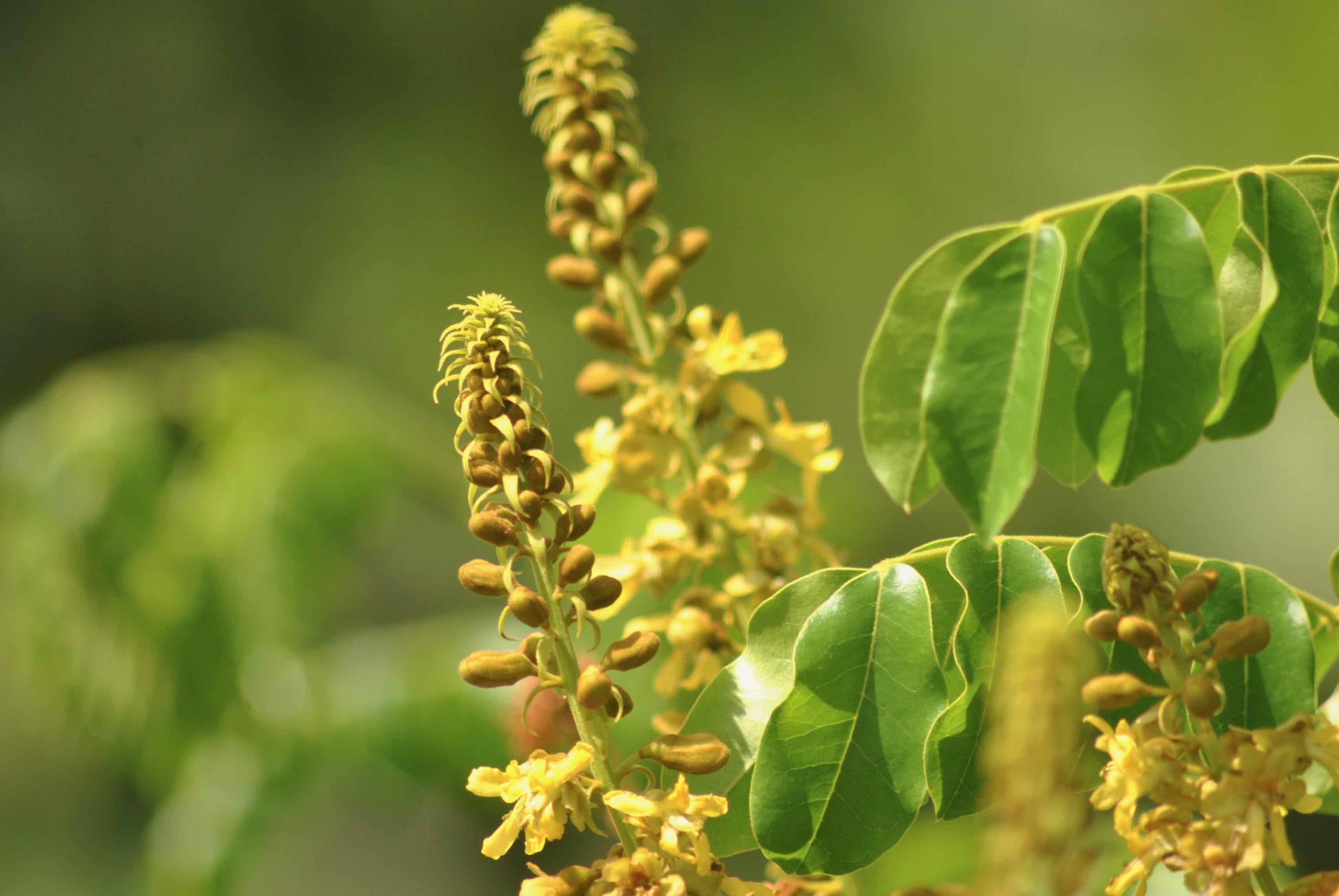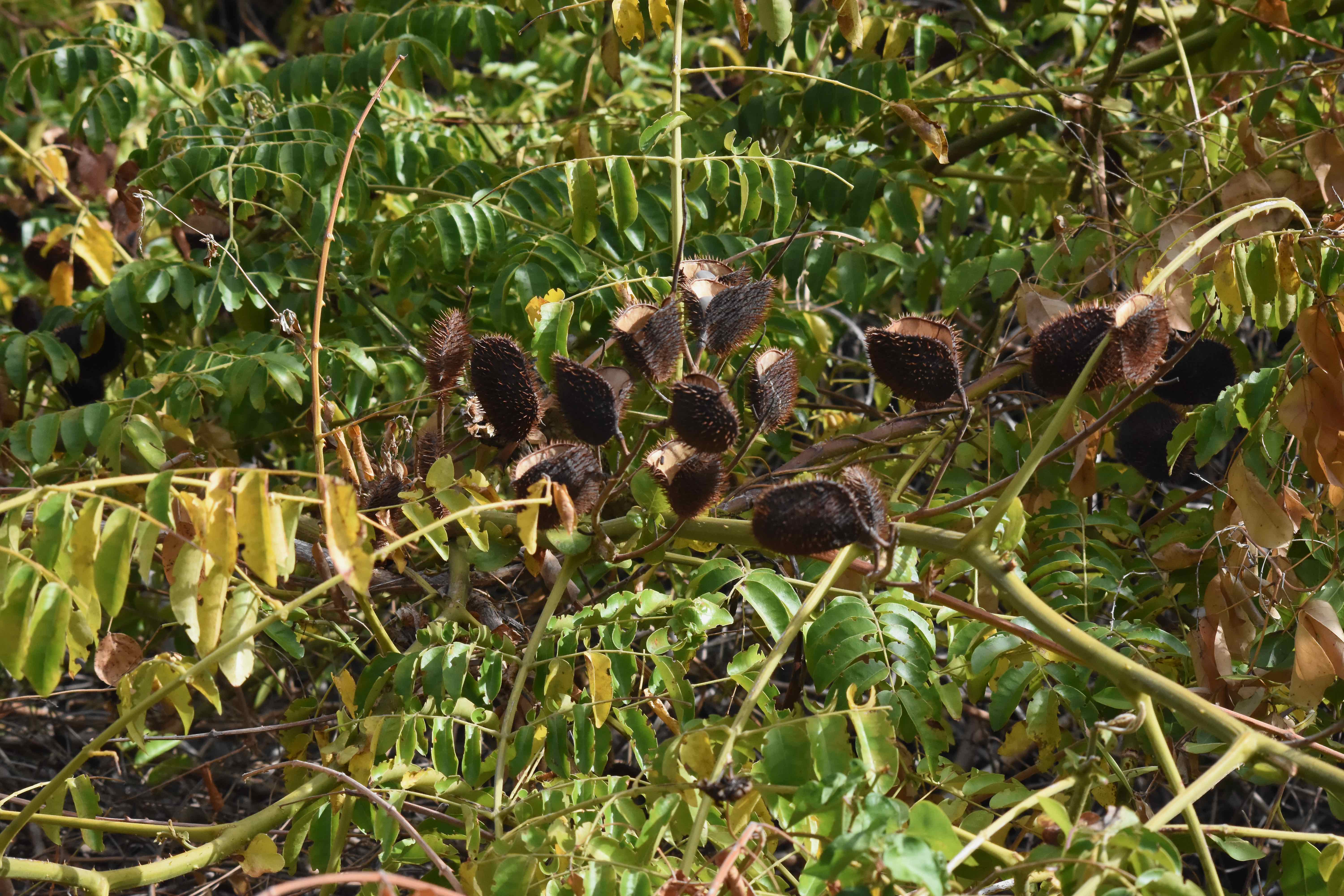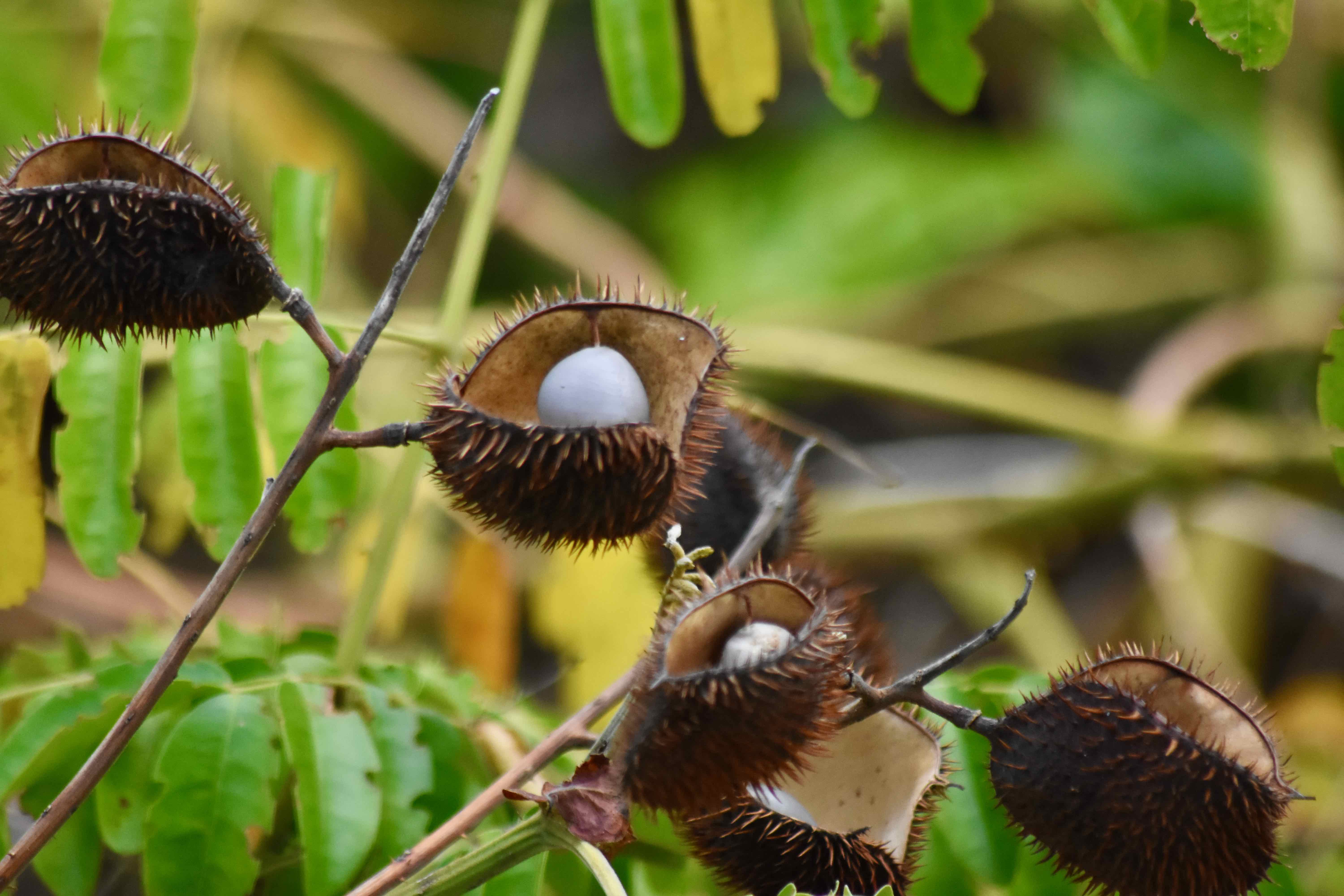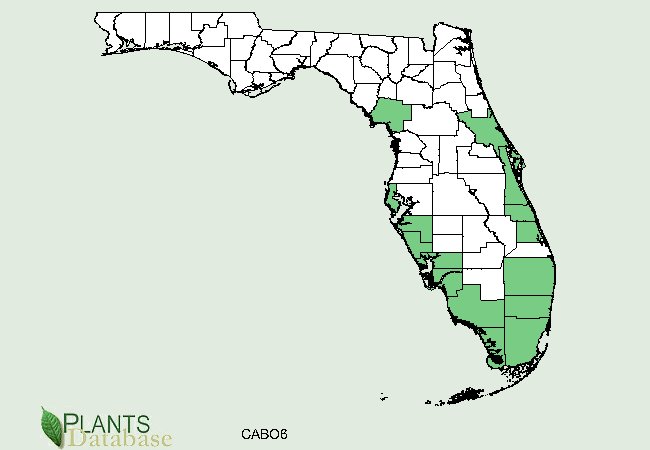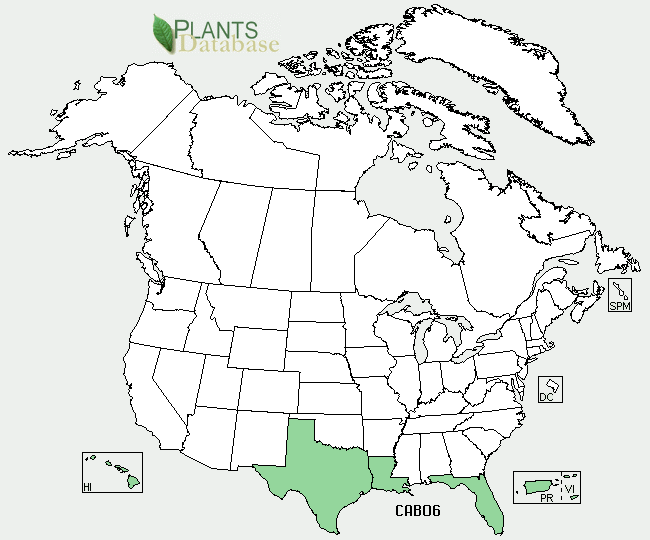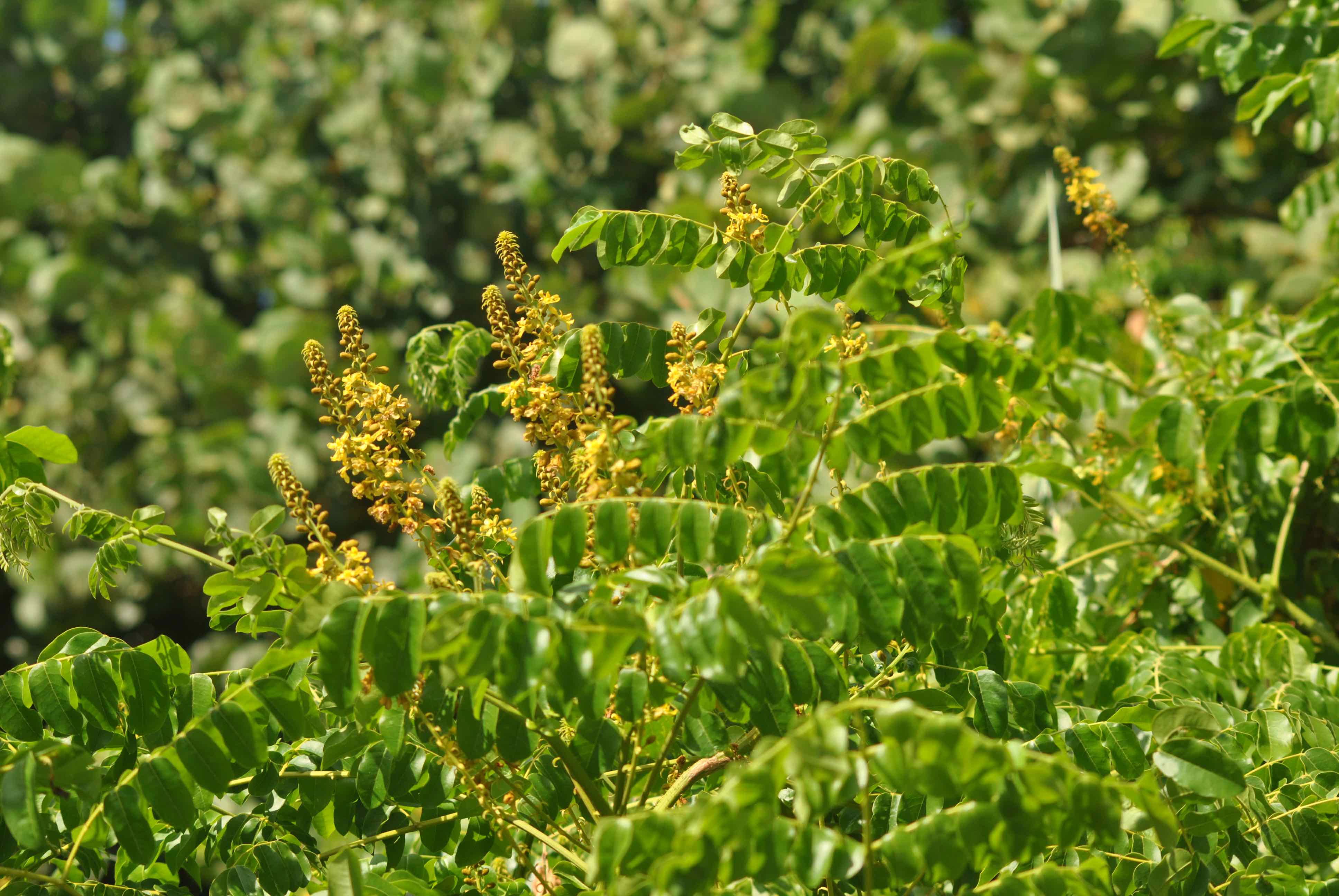
Gray Nickerbean, photographed at Hobe Sound National Wildlife Refuge Jupiter Island Unit, Hobe Sound, Martin County, in October 2013.
Gray nickerbean, Caesalpinia bonduc, is something of a world traveler, having established itself on tropical and subtropical beaches throughout the world, including Florida.
Its secret is its buoyant, gray beans, able to float at sea for months at a time and remain viable before finding a home on some faraway land. Gray nickerbean is easily recognized from the prickly green fruit it produces. Inside the pod are one or two round olive green beans. The pods turn brown when ripe, open up and pop out large, gray beans. If they don't establish themselves where they fall, they can be washed out to sea by rain, floods or storm surge and find a spot to sprout in a different part of the globe. It is a fast growing plant that can reach 20 feet in height.
Gray nickerbean is a Florida native, found in most coastal counties throughout the peninsula. We found these plants as far south as Bahia Honda State Park in the lower Keys, Atlantic Dunes Park in Delray Beach and as far north as Hobe Sound National Wildlife Refuge in Martin County. Distribution maps show it growing along both coasts as far north as Volusia County on the Atlantic and Levy County on the Gulf. It's also found in Texas (one northeastern county along the border with Oklahoma) and, according to older distribution maps, Louisiana. Newer maps exclude Louisiana.
The beans are prized by collectors. They're used as beads in jewelry and as good luck charms in some parts of the world. In India, they're used as a weight standard. In Africa, they're used as game pieces. The beans are used as remedies for diabetes, high blood pressure, venereal disease and other ailments. In Hawaii, gray nickerbean is used as a laxative, blood purifier and as an expectorant.
Gray nickerbean has compound leaves that are arranged opposite each other along the stem. It's a climbing, clambering plant that will use its neighbors as support. It has woody stems and branches that are armed with spines and thorns.
The flowers, yellow and fragrant, are arranged on spikes technically called racemes, blooming year round but peak in spring and summer. The flowers ultimately produce large clam-like thorny pods, each with one or two seeds. The seeds go from green to gray as they mature. Gray nickerbean is host for the extremely rare Miami blue as well as the nickerbean blue butterflies.
It is cultivated, used in landscaping but rarely so. It can provide a thorny barrier, but it is an aggressive plant and usually needs to be controlled.
The name nickerbean apparently derives from the Dutch word, knikker, meaning a clay marble used as toys. The scientific name honors 16th century Italian botanist Andrea Cesalpino. Bonduc comes from the Arabic word for nut, bonduq.
Gray nickerbean goes by a host of other names and spellings, including gray nicker-bean, yellow nicker, gray nicker, nicker nut, wait-a-bit, hold-back, fever nut and hava de San Antonio. It is a member of Fabaceae, the pea family.
Hobe Sound National Wildlife Refuge Jupiter Island Unit
Click on photo for larger image
U.S. Department of Agriculture Distribution Maps


